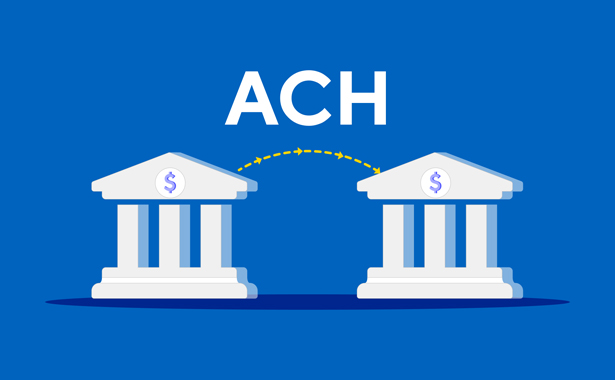Contents
As technology continues to transform the legal industry, lawyers and law firms are increasingly relying on electronic payment systems to facilitate transactions with clients and other parties. One such system is the Automated Clearing House (ACH) payment system, which provides a secure, reliable, and cost-effective way to transfer funds electronically. In this guide, we will provide a comprehensive overview of the ACH payment system and how lawyers can use it to streamline their billing and payment processes. We will cover the basics of ACH payments, including how they work and the benefits they offer.
We will also discuss how lawyers and law firms can use ACH payments to improve their cash flow, reduce costs, and enhance their overall financial management practices. Finally, we will provide tips and best practices for using ACH payments in a legal setting, as well as answer common questions and address common concerns. Whether you are a solo practitioner, a small law firm, or a large corporate legal department, this guide will help you understand the benefits of ACH payments and how to use them effectively in your practice.
What is the ACH Payment System for Lawyers?
ACH (Automated Clearing House) is an electronic payment network used in the United States for financial transactions. It is a system designed for processing financial transactions in batches, which enables the transfer of funds from one bank account to another. The ACH network is operated by the Federal Reserve and the National Automated Clearing House Association (NACHA), which is responsible for establishing and enforcing rules and regulations for ACH legal payments.
The ACH payment system is commonly used for direct deposit of paychecks, Social Security benefits, tax refunds, and other types of electronic payments. It is also increasingly used by businesses to make payments to vendors and suppliers, and by consumers for online bill payments and person-to-person transfers. In the legal industry, ACH payments are often used for transferring funds related to client billing and trust accounts. The use of ACH legal payments can streamline financial processes, reduce administrative costs, and increase efficiency for law firms.
Understanding the ACH Payment System
The Automated Clearing House (ACH) is an electronic payment system that enables businesses and individuals to send and receive payments through the Federal Reserve. The ACH system is a batch processing system that operates on a secure network, allowing for large volumes of transactions to be processed efficiently and securely.
ACH payments can be initiated by both individuals and businesses, and can be used for a variety of payment types including direct deposit, bill payment, and business-to-business transactions. ACH payments are often used for recurring transactions, such as monthly bill payments because they can be scheduled in advance and automated.
The ACH payment process involves three main parties: the originator (the party initiating the payment), the receiver (the party receiving the payment), and the financial institutions that facilitate the transaction. ACH payments are processed in batches and typically take one to two business days to complete.
It’s important for lawyers to understand the ACH payment system for lawyers because it can provide a fast, secure, and efficient way to receive payments from clients and pay vendors or other parties. The ACH system can help to reduce the administrative burden of handling paper checks and can also reduce the risk of fraud associated with traditional paper-based payment methods.
How Does ACH Work?
ACH is an electronic funds transfer system that allows businesses, individuals, and organizations to send and receive payments electronically. The ACH process involves several parties, including the sender, the receiver, and their respective financial institutions. Here is a step-by-step breakdown of how the ACH system works:
- Authorization: The sender authorizes payment to the receiver, either through a one-time authorization or by setting up a recurring payment schedule.
- Originating Depository Financial Institution (ODFI): The sender’s bank, also known as the ODFI, initiates the transaction on behalf of the sender.
- ACH Operator: The ACH operator receives the transaction and verifies that it contains all the necessary information, such as the sender and receiver’s bank information, the transaction amount, and the payment date.
- Receiving Depository Financial Institution (RDFI): The receiver’s bank, also known as the RDFI, receives the payment and deposits it into the receiver’s account.
- Notification: The receiver is notified of the payment via a deposit notification or through their online banking portal.
- Settlement: The ODFI and RDFI settle the transaction, with funds transferred between their respective accounts.
It is important to note that ACH payments typically take one to three business days to complete, depending on the processing times of the respective financial institutions involved.
Overall, the ACH system provides a convenient, cost-effective, and secure way to send and receive payments electronically.
Differences between ACH and Wire Transfer
While both ACH and wire transfers are electronic payment methods, there are several key differences between the two that are important to understand.
- Processing Time: ACH transactions usually take 1-2 business days to complete, while wire transfers are typically completed on the same business day.
- Cost: ACH transactions are much cheaper than wire transfers. Typically, ACH transactions cost just a few cents per transaction, while wire transfers can cost upwards of $20 per transaction.
- Transfer Limit: ACH transactions have a relatively low transfer limit, usually around $25,000. Wire transfers, on the other hand, have a much higher transfer limit, typically in the millions of dollars.
- Transaction Types: ACH transactions are typically used for recurring payments, while wire transfers are used for one-time, high-value transactions.
- Bank Information: For ACH transactions, all that is required is the recipient’s bank routing number and account number. Wire transfers, however, require more detailed information about the recipient’s bank, including the SWIFT code and the full address of the bank.
As a law firm, it is important to understand these differences between ACH and wire transfers, so you can choose the payment method that is most appropriate for your needs.
What is ACH Processing
Automated Clearing House (ACH) is an electronic payment system that enables financial institutions to process electronic transactions in batches. ACH processing allows payments to be made through direct deposits, debit card payments, and credits.
ACH payments are often used for recurring transactions such as monthly bill payments, payroll deposits, and other similar transactions. The ACH payment system operates on a set of rules and regulations established by the National Automated Clearing House Association (NACHA), which governs ACH transactions.
ACH processing is a secure, reliable, and efficient method of making payments, and it can save lawyers and law firms a significant amount of time and money. With ACH processing, payments are processed automatically, eliminating the need for manual processes that are prone to errors and delays. ACH processing is also cost-effective compared to traditional payment methods such as paper checks, wire transfers, and credit card payments, as it incurs lower transaction fees.
Advantages of ACH Payment System for Lawyers
The ACH payment system has several advantages that make it a popular payment method for businesses, including law firms. Some of the main benefits of using ACH payments include:
- Cost-Effective: ACH transactions are typically less expensive than credit card transactions, making them a cost-effective payment method for law firms. This can be especially beneficial for firms that process a high volume of payments.
- Faster Payments: ACH payments are processed quickly, with funds typically being available within one to two business days. This can help law firms improve their cash flow and reduce the time it takes to receive payments from clients.
- Security: The ACH payment system is highly secure, with strict regulations in place to protect against fraud and unauthorized transactions. Additionally, ACH payments are processed electronically, which reduces the risk of lost or stolen checks
- Convenience: ACH payments are convenient for both the law firm and the client. Clients can set up recurring payments or make one-time payments online, while law firms can easily track and manage payments through their payment processing software.
- Environmentally Friendly: ACH payments are paperless, which can help law firms reduce their environmental footprint and support sustainability efforts.
Overall, the ACH payment system for lawyers offers several advantages for law firms, including cost-effectiveness, faster payments, security, convenience, and environmental friendliness. By using ACH legal payment methods, law firms can streamline their payment processing and improve their overall efficiency.
ACH Payment System for Lawyers
As a lawyer, you may want to consider accepting ACH payments as a method of payment from your clients. Accepting ACH payments can make it easier for clients to pay you and can help you receive payments faster. Here are some steps to start accepting ACH payments:
- Choose an ACH payment processor: You will need to choose an ACH payment processor that can help you accept ACH payments from clients. There are many payment processors to choose from, so it’s important to do your research and compare different options before making a decision.
- Set up an ACH merchant account: Once you have chosen an ACH payment processor, you will need to set up an ACH merchant account. This account will allow you to accept ACH payments from clients and will also allow the ACH payment processor to deposit the funds into your bank account.
- Provide clients with your ACH payment information: Once you have set up your ACH merchant account, you will need to provide your clients with your ACH payment information, including your bank account and routing numbers. You can do this by sending them an email or by providing the information on your website.
- Process ACH payments: Once your clients have your ACH payment information, they can use it to pay you via ACH. The ACH payment processor will process the payment and deposit the funds into your bank account.
Accepting ACH payments can be a convenient way for clients to pay you, but it’s important to make sure you choose a reputable ACH payment processor and set up your account correctly to avoid any issues or delays in receiving payments.
How to Request ACH Payments from Clients
To request ACH payments from clients, lawyers must follow a few simple steps:
- Set up an ACH merchant account: The first step in requesting ACH payments is to set up an ACH merchant account. This account will allow you to accept ACH payments from clients directly into your business bank account.
- Request client’s authorization: Once you have set up your merchant account, you will need to request authorization from your client to debit their bank account. This authorization can be obtained through a written agreement or by providing a form for your client to fill out.
- Obtain client’s bank account information: To process an ACH payment, you will need your client’s bank account information, including the bank routing number and account number. This information can be obtained from your client’s check or by asking them to provide it directly.
- Initiate the payment: Once you have obtained authorization and the necessary bank account information, you can initiate the ACH payment. This can be done through your merchant account provider or through a third-party payment processor.
- Monitor the payment: After initiating the payment, it is important to monitor the transaction to ensure that it is successfully processed. You should receive a notification once the payment has been completed, and you should also check your business bank account to confirm that the funds have been deposited.
By following these steps, lawyers can request ACH payments from clients in a secure and efficient manner.
ACH Security and Compliance
When it comes to accepting payments electronically, security and compliance are of utmost importance, especially in the legal industry where sensitive financial and personal information is exchanged. The ACH payment system is designed to be secure and reliable, with multiple layers of security in place to protect against fraud and unauthorized access. Here are some key considerations for lawyers when it comes to ACH security and compliance:
Fraud Prevention
- ACH payments can be vulnerable to fraud and other financial crimes, so it is important for lawyers to take steps to prevent fraud and protect their clients’ information.
- One way to prevent fraud is to implement strong authentication processes, such as multi-factor authentication or biometric authentication, to verify the identities of both the payer and the payee.
- Lawyers should also regularly monitor their ACH transactions for any unusual or suspicious activity, and report any suspected fraud to their financial institution immediately.
Data Security
- ACH transactions involve the transmission of sensitive financial and personal information, so it is important for lawyers to ensure that this information is protected from unauthorized access or disclosure.
- One way to ensure data security is to use encryption to protect data both in transit and at rest. Encryption can help prevent hackers or other unauthorized users from accessing sensitive data.
- Lawyers should also ensure that they are using a secure ACH processing platform that complies with industry standards for data security, such as PCI-DSS (Payment Card Industry Data Security Standard).
Regulatory Compliance
- In addition to ensuring the security of ACH transactions, lawyers must also comply with applicable laws and regulations related to electronic payments, such as the Electronic Fund Transfer Act (EFTA) and the Uniform Commercial Code (UCC).
- Lawyers should also be aware of any state-specific regulations that may apply to ACH payments, such as those related to data breach notification or data protection.
- To ensure compliance with these regulations, lawyers may need to work with a qualified attorney or financial advisor who is familiar with the legal and regulatory landscape of ACH payments.
Recordkeeping and Reporting
- Finally, it is important for lawyers to maintain accurate records of their ACH transactions, including payment amounts, dates, and other relevant details.
- Lawyers should also be prepared to provide reports or other documentation related to ACH transactions in the event of an audit or other regulatory review.
- To ensure that they are meeting these recordkeeping and reporting requirements, lawyers may need to work with a qualified accountant or financial advisor who can help them navigate the complexities of ACH payment reporting.
By taking these key considerations into account, lawyers can help ensure that their use of the ACH system is both secure and compliant with applicable laws and regulations.
What Are ACH Payment System Security Measures
ACH security measures are crucial for ensuring the safety and confidentiality of sensitive financial information. Here are some of the security measures that are commonly employed by banks and financial institutions to protect ACH transactions:
- Multi-factor authentication: This is a security feature that requires users to provide multiple forms of authentication before being granted access to their account or initiating a transaction. This can include a password, security token, or fingerprint.
- Tokenization: This is the process of replacing sensitive data, such as bank account numbers, with a unique token or code. This helps to protect the data from being stolen or compromised.
- Encryption: This is the process of converting data into a code to prevent unauthorized access. ACH transactions are typically encrypted during transmission to prevent interception and theft.
- Fraud detection: Banks and financial institutions employ sophisticated fraud detection algorithms to identify suspicious activity and prevent fraud.
- Compliance with regulations: ACH transactions are subject to various regulations and guidelines, including those set forth by the National Automated Clearing House Association (NACHA) and the Office of Foreign Assets Control (OFAC). Banks and financial institutions must comply with these regulations to ensure the safety and legality of ACH transactions.
By implementing these security measures and complying with regulations, banks, and financial institutions can help ensure the safety and security of ACH transactions. As a law firm accepting ACH payments, it is important to work with a reputable and trustworthy bank or payment processor that prioritizes security and compliance.
ACH Compliance Requirements
The ACH payment system is subject to several compliance requirements to ensure the security and integrity of transactions. These requirements include:
The Office of Foreign Assets Control (OFAC)
OFAC is responsible for enforcing economic sanctions programs against targeted foreign countries, individuals, and entities. As a result, all ACH transactions must comply with OFAC regulations. Law firms must check that their clients are not on the OFAC’s list of prohibited entities before processing ACH payments.
The National Automated Clearing House Association (NACHA) Rules
NACHA is the governing body that oversees the ACH network. It has established a set of rules and guidelines that govern ACH transactions to ensure their safety and security. The rules cover areas such as authorization requirements, record-keeping, and transaction limits.
To comply with NACHA rules, law firms must ensure that they have proper authorization from clients before processing ACH payments. This includes obtaining written or electronic consent from clients before initiating a transaction. Additionally, law firms must keep accurate records of all ACH transactions, including the transaction amount, date, and client information.
Overall, it’s important for law firms to stay up-to-date on ACH compliance requirements and to have processes in place to ensure that all ACH transactions are conducted in accordance with these regulations. This can help to protect both the law firm and its clients from potential fraud or other security risks.
Choosing an ACH Payment System Provider
Choosing the right provider for the ACH payment system for lawyers is crucial for a law firm as it involves financial transactions and sensitive data. Here are some factors to consider while choosing a provider:
Security and Compliance
Security and compliance should be the topmost priority when selecting an ACH payment system provider. It is important to choose a provider that complies with the latest security standards and regulations like PCI-DSS, HIPAA, and SSAE-18.
User-Friendliness
The ACH legal payment provider should have a user-friendly platform that is easy to navigate and use. This helps to save time and avoid errors while processing transactions.
Cost
Cost is an important factor to consider. It is essential to choose a provider that offers transparent pricing with no hidden charges.
Reputation
It is important to choose an ACH payment system provider that has a good reputation in the market. This can be evaluated by checking their reviews, testimonials, and ratings on various online platforms.
Additional Features
Some providers of the ACH legal payment system offer additional features like mobile apps, multi-currency support, and automatic transaction reconciliations. These features can provide added benefits to law firms and help to streamline their payment process.
In conclusion, selecting the right payment provider is critical for law firms to ensure secure and efficient payment processing. By considering the above factors, law firms can choose a provider that meets their specific requirements and helps to streamline their payment process.
Alternatives to the ACH Payment System for Lawyers
While the ACH payment system is a popular payment method among lawyers, there are also other payment options available. Here are some alternatives to consider:
A. Credit card payments are a widely used method for paying legal fees. Accepting credit card payments allows clients to pay their legal fees easily and securely online. Many law firms use payment processors such as LawPay, which is specifically designed for lawyers and offers compliant credit card processing solutions.
B. PayPal payments PayPal is another popular payment option for lawyers. Clients can easily make payments through their PayPal account or with a credit or debit card. Law firms can set up a business account with PayPal to accept payments and transfer funds directly to their bank account.
C. Check payments While check payments may seem old-fashioned, they are still a popular payment method for legal services. Law firms can set up a lockbox or post office box to receive check payments, or they can be sent directly to the firm’s physical address.
D. Cryptocurrency payments are a newer payment method that some law firms may choose to accept. Accepting cryptocurrency payments can offer greater security and privacy, but it’s important to note that the value of cryptocurrency can be volatile.
When it comes to accepting payments from clients, there are a few alternatives to the ACH payment system for lawyers that you can consider. One option is to use payment tools provided by practice management software such as RunSensible, which allows you to accept payments using a credit card and PayPal. Another option is to use traditional payment methods such as checks or wire transfers, although these may not be as convenient or efficient as using an online payment system. Ultimately, it’s up to each lawyer to weigh the pros and cons of different payment options and choose the one that best suits their needs and preferences.
Choosing the Best Payment Method for Your Law Firm
While the ACH payment system is a popular option for lawyers to accept payments, there are also alternatives available. One such alternative is RunSensible’s payment tools, which allow lawyers to accept payments using credit cards and PayPal. RunSensible’s payment tools are built-in parts of an all-in-one legal practice management software, fully integrated with the billing and time tracking features, making it easier for lawyers to get paid. With RunSensible, lawyers can also enjoy other features such as document management, task management, and client communication tools, which can improve their overall productivity and streamline their practice. So, if you’re looking for a more efficient and comprehensive way to manage your law practice, consider RunSensible — in fact, why not sign up for free right now and see it in action for yourself?
FAQ
1. Can I use the ACH payment system for international transactions?
No, ACH payments are only available for domestic transactions within the United States.
2. Is it secure to use the ACH payment system for legal payments?
Yes, the ACH payment system is secure and compliant with various regulations to protect both parties involved in the transaction.
3. Is it possible to use the ACH payment system for transactions outside the US?
No, the ACH payment system is limited to transactions within the United States only. It cannot be used for transactions outside the US. However, some countries have similar electronic payment systems.
Disclaimer: The content provided on this blog is for informational purposes only and does not constitute legal, financial, or professional advice.






